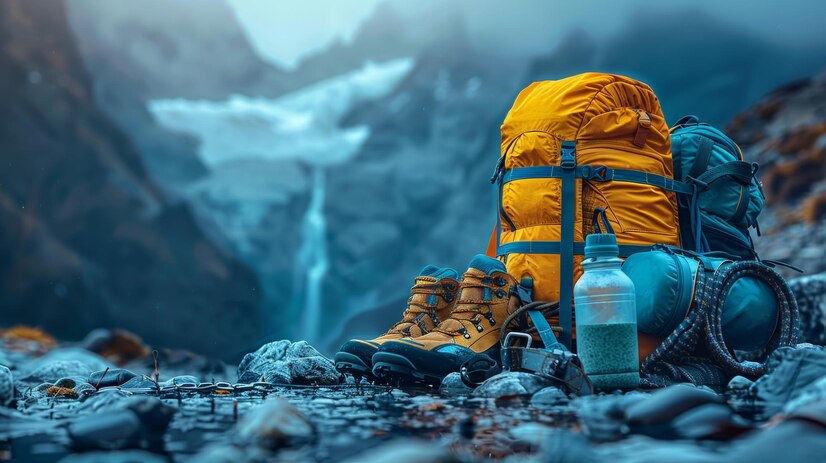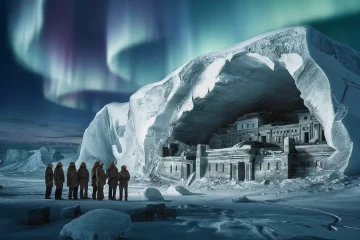The Everest Base Camp trek is a dream adventure for many travelers. This 12-day journey takes you through stunning Himalayan landscapes. You’ll experience Sherpa culture up close. The trek ends at the base of the world’s tallest mountain. This guide breaks down your journey day by day.
Day 1: Arrive in Kathmandu (1,400m)
Welcome to Nepal’s vibrant capital city. Take time to rest after your flight. Visit Thamel to buy any last-minute trekking gear. Your trek operator will brief you about the journey. Early dinner and good sleep are essential tonight.
Day 2: Fly to Lukla (2,860m) and Trek to Phakding (2,610m)
The adventure begins with a spectacular mountain flight. The Lukla airport landing is thrilling but safe. After arrival, meet your trekking team. Hike 3-4 hours through pine forests to Phakding village. The trail follows the Dudh Koshi River. Look for your first views of distant peaks.
Day 3: Phakding to Namche Bazaar (3,440m)
Today involves 6-7 hours of hiking. You’ll cross several suspension bridges. The trail climbs steadily through rhododendron forests. Namche Bazaar is the gateway to the high Himalayas. This bustling mountain town has shops, cafes, and Wi-Fi. Your first views of Mt. Everest may appear if weather permits.
Day 4: Acclimatization Day in Namche Bazaar
Rest days are crucial for safe trekking. Your body needs time to adjust to the altitude. Take a short hike to the Everest View Hotel. Visit the Sherpa Culture Museum. Shop for souvenirs in Namche’s market. Proper acclimatization prevents altitude sickness later on.
Day 5: Namche Bazaar to Tengboche (3,860m)
The trail offers stunning mountain panoramas today. You’ll trek for 5-6 hours through beautiful forests. Tengboche houses the largest Buddhist monastery in the region. Attend an afternoon prayer ceremony if possible. The sunset views of Everest and Ama Dablam are unforgettable.
Day 6: Tengboche to Dingboche (4,410m)
Today’s 5-6 hour trek crosses the tree line. The landscape becomes more barren and rocky. You’ll follow the Imja Khola river valley. Dingboche sits in a sheltered valley with stone-walled fields. Mountain views expand as you gain elevation. The air gets noticeably thinner here.
Day 7: Acclimatization Day in Dingboche
Another crucial rest day at higher altitude. Take a short hike up Nangkartshang Peak for views. Your guide will check your health and oxygen levels. Drink plenty of water and rest well. The Everest Base Camp trek requires proper acclimatization for safety.
Day 8: Dingboche to Lobuche (4,940m)
The 5-hour trek today feels harder due to altitude. You’ll pass the Thukla Pass with its memorial stupas. These honor climbers who died on Everest. The landscape becomes increasingly stark and dramatic. Khumbu Glacier views appear as you approach Lobuche.
Day 9: Lobuche to Gorak Shep (5,170m) to Everest Base Camp (5,364m) and back to Gorak Shep
This is the big day of your journey. Trek 3 hours to Gorak Shep over rocky terrain. Have lunch and rest briefly. Then hike 2-3 hours to Everest Base Camp. The trail crosses the Khumbu Glacier’s rubble. At Base Camp, celebrate your achievement with photos. Return to Gorak Shep for overnight stay.
Day 10: Gorak Shep to Kala Patthar (5,545m) to Pheriche (4,280m)
Wake up early for the sunrise hike to Kala Patthar. This viewpoint offers the best views of Mt. Everest. The 2-hour climb is steep but worth every step. Return to Gorak Shep for breakfast. Then descend 5-6 hours to Pheriche. Your body will appreciate the lower altitude.
Day 11: Pheriche to Namche Bazaar (3,440m)
Enjoy the 6-7 hour downhill trek today. Your lungs will fill with richer oxygen. The descent goes faster than the ascent. Stop at Tengboche monastery one more time. Celebrate reaching Namche with fellow trekkers. Your body will recover quickly at this lower elevation.
Day 12: Namche Bazaar to Lukla (2,860m)
The final day of trekking takes about 7 hours. The trail feels familiar now as you retrace your steps. Cross the final suspension bridges with a sense of accomplishment. Lukla offers hot showers and cold beers. Enjoy a farewell dinner with your trekking team.
Final Tips for Your Everest Base Camp Journey
Proper equipment makes the trek more enjoyable. Pack layers for varying temperatures. Altitude sickness can affect anyone regardless of fitness. Walk slowly and stay hydrated throughout. Most trekkers book through reliable agencies for safety. The best seasons are spring (March-May) and fall (September-November).
The Everest Base Camp trek changes lives forever. The physical challenge builds inner strength. The mountain scenery will stay in your memory. The warm Sherpa hospitality touches hearts. This adventure truly earns its place among the world’s greatest treks.
This 12-day itinerary provides a safe and enjoyable pace. Some trekkers add extra days for side trips. Others combine it with Gokyo Lakes or Three Passes treks. Whatever your choice, the journey to Everest will reward you beyond expectations.




